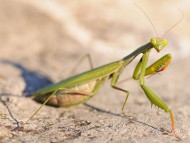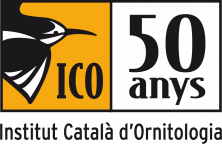Lekuona JM, Artázcoz A, Remón JL, Muñoz JD. Census, phenology and habitat choiceof Baillon's Crake (Zapornia pusilla) in Navarra (N Spain). pp. 1-9.

Photo: Miguel Ángel Rojas Ruiz
|
In general, crakes are shy and elusive species and for this reason their life is still poorly known. Monitoring of the breeding population of Baillon's Crake in Navarra since 1998 demonstrates that this species has disappeared from most natural wetlands, although it has been found recently breeding in rice fields. |
Orihuela-Torres A, Perales P, Rosado D, Pérez-García JM. Feeding ecology of the Common Kestrel (Falco tinnunculus) in the south of Alicante (SE Spain). pp. 10-16.

Photo: Christian Neumann
|
Since two decades palms are being affected by the red palm weevil, an invasive exotic beetle. Alicante has some of the most emblematic palm groves of Spain, but they are currently threatened by this pest. The analysis of kestrel diet in Alicante showed that these small birds of prey consume a large number of insects. Among them, the red palm weevil was found usually. Could krestels be a good alert system and control of this pest? |
Aymí R, González Y, López T, Gordo O. Bird-window collisions in a city on the Iberian Mediterranean coast during autumn migration. pp. 17-28.

Photo: Raül Aymí
|
Every year millions of birds die by collisions against man-made structures, being bird-window collisions probably the most important cause of mortality in the case of songbirds. Surprisingly, this phenomenon has received little attention in Europe. This study carried out between 2012 and 2015 estimated that a single modest building caused c. 350 causalities during the autumn migration in those four years of surveys. |
Ortega E. Etymological study of scientific nomenclature of birds in Catalonia: the contribution of classic languages in modern taxonomy. pp. 29-40.

|
Birds, like all other organisms, have a scientific name in Latin consisting of two words: the genus and the specific epithet. The etymological study of this nomenclature has made possible to determine the contribution of different linguistic resources as well as the source language to create the scientific names of Catalan birds. |
Cortés JM. Interspecific allopreening between Monk Parakeet (Myiopsitta monachus) and Mitred Parakeet (Psittacara mitratus). pp. 41-44.

Photo: Larry Thompson
|
Birds spend a lot of time cleaning their plumage to keep it in perfect condition. Unfortunately, there are parts of the body where they can not access. Then, they need help from a partner. Exceptionally, this partner can be another species, a behavior known as allopreening or allogrooming. This article describes an exceptional case between two species of invasive parrots in Catalonia.
|
Covas L, Senar JC, Roqué L, Quesada J. Deadly attack records of Rose-ringed Parakeet Psittacula krameri on native avifauna. pp. 45-49.
 |
Parrots and parakeets are the most popular and successful group of invasive birds in Europe. However, their negative impacts on native bird populations are almost unknown. Some deadly attacks of Rose-ringed Parakeets on house sparrows and blue tits have been recorded recently in Barcelona city. |
Illa M, Jutglà R. Praying Mantis eating feathers on a passerine caught with mistnets. pp. 50-52.

Photo: Javier Gállego
|
Mantises are amazing predators able to capture and kill even small birds. During ringing activities, we should pay attention to the occurrence of these insects, especially gravid females, close to the mistnest. They can attack trapped birds probably searching for an easy source of proteins. |
Garcia S, Anton M. Second clutch in urban Common Kestrels (Falco tinnunculus) in Barcelona. pp. 53-55.

Photo: Javier Chueca
|
Kestrels are very flexible raptors used to breed in urban habitats. In 2016, a second clutch was found in a nest box located in Barcelona city. |

.png)














